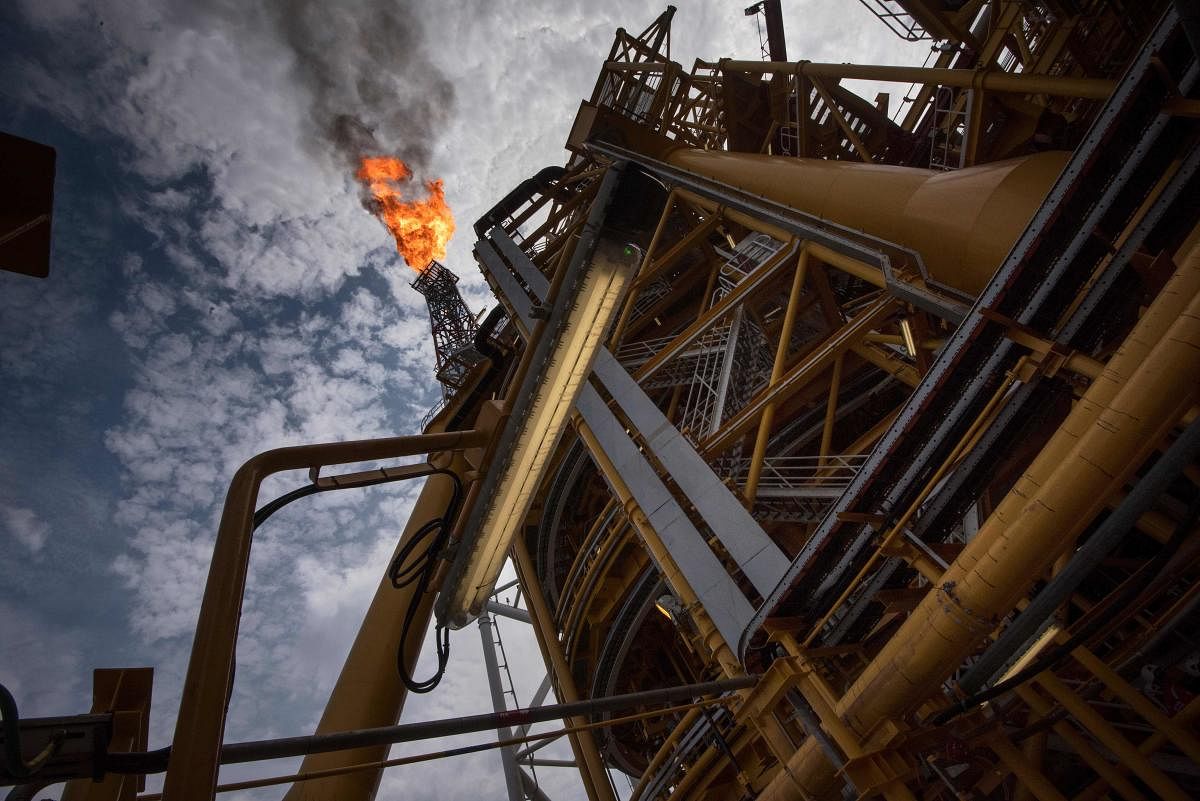
Still, it is worth understanding what caused the rupee’s recent depreciation, who benefits and who loses and whether it is a net positive or negative for the economy.
The rupee’s fall against the dollar came primarily as a response to increased oil prices and the resultant increase in demand for the dollar especially anticipating sanctions against Iran. (The Indian currency has recovered somewhat in recent days because oil prices have fallen due to increased US production, but this article deals with the sharp slide in the rupee in the weeks preceding when oil prices were on fire). For some considerable length of time India was hit by a double whammy – not only was crude oil more expensive in dollar terms but being more expensive it caused the rupee to depreciate, therefore making oil even more expensive.
Furthermore, with the US Fed increasing rates, and US economic growth at historically high levels, speculative capital left the country causing the weakness of the rupee against the dollar.
At a micro level, different groups are differently affected by a falling rupee. Importers take a hit, as do companies which use imported products as inputs, while exporters benefit. On a macro level, however, as India is a net importing nation, the current account deficit widens and the oil bill balloons, risking a slippage in the fiscal deficit target absent higher taxes.
A higher fiscal deficit means higher inflationary pressures which brings with it a whole host of complications, necessitating higher interest rates to keep the lid on such pressures, which could cause investment to slow. A falling rupee therefore, at least on an all-other-things-being-equal basis, seems to be a net negative for India. Why then has China pursued a strategy of keeping its currency low?
Peculiar case of China
China’s case is unique. In China’s case, the exchange rate has historically been pegged at a lower-than-market rate, boosting demand for its exports. This strategy has worked largely because the Chinese model of development has been export- and savings-led, rather than consumption-led.
Thus, exports have been made artificially cheap – effectively subsidised by the government keeping the exchange rate low – thus creating new jobs and whole industries that were absent earlier.
This worked because there was an opportunity, or a gap in the world market, where China could fill a need for initially low-value manufacturing products, and then higher value products, to be Made-In-China. This strategy worked in sync with Chinese wooing of foreign investment, investments in infrastructure and human capital.
Will the depreciation of the rupee work in much the same way in India? Doubtful. While IT services and pharma companies may find some benefit with the lower exchange rate, one, they may use the extra money to deliver higher profits to shareholders, rather than investing the extra money earned, and two, these sectors, while of a reasonably high value, employ a fraction of the overall Indian workforce and cannot sustain the entire burden of economic growth of India. The key here is that exports in India at least are only incidental to the India growth story, rather than fundamental to it as in China.
India’s trade balance (exports-imports) has historically been negative – a trend that has accelerated as India has opened up to the world economy. In 2017, the trade balance (estimated) stood at a negative $156 billion or about 4.4% of GDP.
China’s trade balance, on the other hand, is at the other extreme at a positive $500 billion or a 4.4% of GDP in a positive direction. Therefore, as the Chinese strategy is to keep its currency artificially weak, it is to India’s advantage when the rupee strengthens.
For a weak rupee to be advantageous, India would have a significantly positive trade balance, for which, it would have to double its exports today, all other things equal. Merely growing 10% a year would not suffice as imports are also rising.
Furthermore, with the Chinese soaking up the manufacturing export market, the opportunity to become the world’s factory has already gone to the lowest and most eager bidder – China.
With stagnation in Europe at least – if not America – the opportunity has arguably been lost. And even if the export-led growth strategy could work, India -- ‘Make in India’ billboards notwithstanding – has not based its growth on exports thus far and any attempts to do so thus far have been feeble at best.
Optimal value?
In such a scenario – that is, in the absence of a cohesive development strategy such as China’s export-led growth – what is the optimal value of the rupee? Given that oil is such a major component of domestic consumption which is imported, the Indian economy would undoubtedly benefit from a strong rupee.
A strong rupee would hit exports, but that matters less to India because we are not an export-led economy. Given that we are not, and for macro reasons outlined above, all feasible steps to strengthen the rupee within the framework of a floating currency are welcome. Whether a pegged currency would be better is a question outside the scope of this article.
What then can be done? Broadly, for the rupee to strengthen against the dollar, demand for the rupee must go up or demand for the dollar has to go down. To that extent, measures such as curbing imports could work, although India’s major import, crude oil has to be imported as no substitute is domestically available immediately. Other policy measures such as easing restrictions on foreign investment would also have some impact, though foreign capital flows are more dependent on global factors such as higher interest rates in the US.